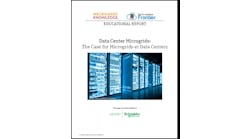The National Renewable Energy Lab (NREL) reports that is researching a transportable microgrid with the help of other federal labs, the military, Tesla, Schweitzer Engineering Laboratory and Distributed Utility Associates.
This transportable microgrid, which includes energy storage, is being designed for use at military bases. The goal is to improve reliability, reduce power fluctuations from solar and decrease emissions from diesel generators or other fossil fuels. The researchers hope to put the system on a path toward commercialization by making it more cost-effective and ensuring it passes tests for safety and reliability.
NREL has added a Tesla 500 kW-4 hour energy storage systems and a 200 kVA synchronous condenser to the transportable microgrid. The project also will use the Lawrence Berkeley National Laboratory optimization engine DER-CAM with Schweitzer technology and can easily be set for a wide variety of applications at Department of Defense sites.
Other partners include the PNAVFAC EXWC Port Hueneme Naval Base and Electric Power Research Institute.
***
FuelCell Energy plans for the installation of a 5.6 MW fuel cell power generation system for Pfizer, one of the world’s largest biopharmaceutical companies.
The fuel cell will provide electricity and steam under a 20-year power purchase contract for Pfizer’s 160-acre research and development facility in Groton, Conn.
The combined heat and power (CHP) offers both a low-carbon output and reliability to the campus. It will operate connected to the grid, but also will be able to island during grid outages and keep energy flowing to the campus.
The fuel cell installation is expected to be fully operational by summer 2016.
“This power purchase model delivers immediate value while increasing electrical reliability by providing the security of on-site power with a financial structure that avoids an investment in power generation assets, and FuelCell Energy installs, operates and maintains the fuel cell power plants,” said Chip Bottone, FuelCell Energy president and CEO.
The fuel cell system will include two DFC3000 fuel cell power plants, each rated at 2.8 MW that operate in tandem to generate 5.6 MW.
The fuel cells are expected to avoid emissions of 28,900 tons of carbon dioxide and more than 34 tons of nitrogen oxides. Pfizer can retain the renewable energy certificates created by the installation or sell them to third parties.
***
2015 was a great year for the growing microgrid industry. Here’s a look at Microgrid Knoweldge’s five most read articles for 2015.
- Rumor is True: Oncor Unveils First-of-a-Kind-Microgrid
- Hello Local Energy, Bye Old Power Industry, Say New York Regulators with Key Vote
- Did Tesla Really Move the Needle on Microgrids April 30? Or Did New York?
- NY Prize Stage 1 Awards: Who, Why and What’s it Mean for Community Microgrids
- The Electric Vehicle as a Power Plant: A California Utility Shows How it’s Done
Follow Microgrid Knowledge on twitter @MicrogridNews.






